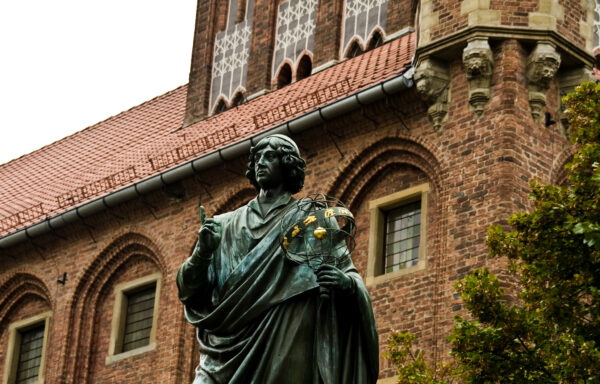

EGEA Toruń


Why toruń?
Toruń is a great destination for everyone seeking something a little bit more off the beaten path. Our city provides you original gothic architecture, interesting history with legends in every corner, and
at the same time gives you the opportunity to enjoy your cup of coffee, tea (or beer) peacefully.
The best places to visit in Toruń

The Bridge Gate in Toruń (before the bridge was built, called the Ferry Gate or the Przewoźna Gate) – one of the three preserved city gates of Toruń on the Vistula side, located at the end of Mostowa Street. Its name is related to the fact that it led to a wooden bridge over the Vistula, built at the end of the 15th century and existing until the 19th century
The Living Museum of Gingerbreads in Toruń is the first so interactive museum in Europe. It has existed since 2006 and it is located at 9 Rabiańska street, in the middle of the city center (199 steps from The Nicolas Copernicus Monument). The Living Museum of Gingerbreads magically takes the visitors to the Medieval times. Here you can learn about every ritual connected with baking gingerbreads. It all takes place under the watchful eyes of m Gingerbread Master and charming Gingerbread Witch. The visitors prepare dough by themselves and then bake the specialties of Toruń in traditional wooden molds.


The architecture of the 15th-century Gothic house and historical objects also made it possible to restore the reality of everyday life of middle-class families in interiors of a late medieval household. Numerous objects, including, in particular, those showing material culture and customs of middle-class families from Toruń originate from archeological excavations in the Old and New City of Toruń.
Medieval Town of Toruń – UNESCO World Heritage
The Medieval Town of Toruń is comprised of three elements: the ruins of the Teutonic Castle, the Old Town, and the New Town. The combination of the castle with the two towns, surrounded by a circuit of defensive walls, represents a rare form of medieval settlement agglomeration. The majority of the castle – which was built in a horseshoe-shaped plan in the mid-13th century as a base for the conquest and evangelization of Prussia – was destroyed during an uprising in 1454, when the local townspeople revolted against the Teutonic Order. The ruins and the archaeological remains have been excavated and safeguarded. The Old Town was granted an urban charter in 1233, which swiftly led to its expansion as a major commercial trading centre. The adjacent New Town developed from 1264, mainly as a centre for crafts and handiwork. Both urban areas bear witness to the interchange and creative adaptation of artistic experience that took place among the Hanseatic towns.

An exceptionally complete picture of the medieval way of life is illustrated in the original street patterns and early buildings of Toruń. Both the Old Town and the New Town have Gothic parish churches and numerous fine medieval brick townhouses, many of which have retained their original Gothic façades, partition walls, stucco-decorated ceilings, vaulted cellars, and painted decoration. Many townhouses in Toruń were used for both residential and commercial purposes. A fine example is the house in which Nicolaus Copernicus was reputedly born in 1473; it has been preserved as a museum devoted to the famous astronomer’s life and achievements. The townhouses often included storage facilities and remarkable brick granaries, some of which were up to five storeys high. Because so many houses have survived from this period, the medieval plots are for the most part still preserved, delineated by their original brick boundary walls.
Toruń provides an exceptionally complete picture of the medieval way of life. Its spatial layout provides valuable source material for research into the history of urban development in medieval Europe, and many of its buildings represent the highest achievements in medieval ecclesiastical, military, and civil brick-built architecture. (Source: UNESCO)

The Nicolaus Copernicus University in Toruń (NCU) was founded in 1945. It is one of the largest universities in Poland, currently comprising 16 faculties (including 3 medical faculties at Collegium Medicum UMK in Bydgoszcz). It provides graduate and postgraduate courses for 18 331 students, offering education in over 100 fields of study and 55 postgraduate courses. The university employs 4453 staff on both Toruń and Bydgoszcz campuses, over half of whom are academic teachers. NCU alumni now number around 200 000.
/jɔː/ word usually used in Toruń, which has many meanings. The meaning depends on intonation or situations and it can express agreement, disbelief, surprise, disappointment or getting a flash ofgenius.
TO do list in toruń
- Take a selfie with Nicolaus Copernicus (You can find the statue at the Old Town)
- Enjoy the flavour of gingerbread! – Eat a “katarzynka” cookie, taste gingerbread latte or gingerbread beer!
- Take a walk to the Bydgoskie Przedmieście district and take some rest in the park
- Capture the famous view of Torun’s Old Town
- Visit the oficial Museum of Gingerbread!
- Say proudly “Jo!” as an answer

SEE YOU IN TORUŃ

Postal Address / Visiting Address
Faculty of Earth Sciences and Spatial Management
ul. Lwowska 1,
87-100 Toruń

